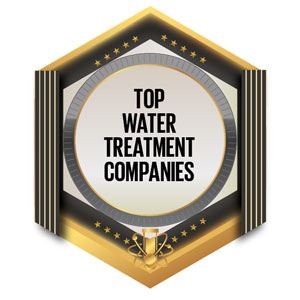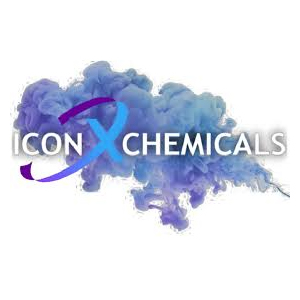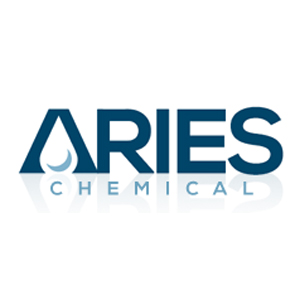\\\\ Top Water Treatment Companies \\\\
\\\\\\\\\\ Top Water Treatment Companies \\\\\\\\\\
-
ICONX Chemicals
ICONX Chemicals manufactures custom-formulated specialty chemicals and provides integrated water treatment solutions for service providers. Its portfolio includes Scale & Corrosion Inhibitors, Biocides, RO products, Antifoams and Defoamers, Safe Acids, Film-Forming Agents, and Advanced Filtration Technologies. All offered with private-label support, global logistics, and regulatory management.
-
American Water Chemicals
American Water Chemicals (AWC) develops advanced membrane treatment chemicals and software for industries requiring high-performance water purification. Serving sectors from municipal water to microelectronics, AWC is recognized for its expertise in antiscalants, membrane cleaners and process optimization, helping clients extend membrane life, improve efficiency and address complex fouling challenges.
-
Aries Chemical
Aries Chemical specializes in water treatment solutions for industrial and municipal clients. Its expertise spans process optimization, wastewater management and chemical supply, helping organizations improve efficiency and meet regulatory standards. With a focus on technical support and sustainable practices, Aries Chemical is recognized for reliable service and tailored, results-driven approaches.
-
Clearwater Industries, Inc
Clearwater Industries, Inc. engineers and manufactures advanced water clarification equipment and chemical systems, helping industries efficiently remove solids from process water and wastewater. Based in Wisconsin, it offers free water testing, expert consulting and eco-friendly solutions—empowering clients to achieve cleaner water and sustainable operations with proven, American-made technology.
-
USALCO
USALCO is a provider of water and wastewater treatment solutions, specializing in alumina-based products for municipalities and industries. With over a century of experience, it focuses on delivering reliable, cost-effective solutions to improve water quality, manage wastewater and serve specialized industrial applications, supported by technical expertise.
More in News
Transforming Plastic Waste Management: New Technologies and Policy Improvements
Friday, October 10, 2025
Fremont, CA: The global challenge of plastic waste continues to escalate, driven by increasing production levels and inadequate recycling systems. As traditional recycling methods struggle to keep pace with the growing demand, innovative technologies and enhanced public policies are transforming our approach to plastic waste management. Enhancements in sorting, chemical processing, and material recovery are enhancing recycling efficiency, while more stringent regulations are encouraging manufacturers to adopt responsible and sustainable practices. The sheer scale of plastic production and disposal highlights the critical need for efficient waste management solutions. Every year, hundreds of millions of tons of plastic are produced globally, yet only a tiny fraction is successfully recycled. A significant portion is either incinerated or discarded in landfills and oceans, contributing to environmental pollution and greenhouse gas emissions. Recycling rates remain alarmingly low in many regions, with only a small percentage of plastic waste being repurposed. Compounding the issue, a large share of manufactured plastics are discarded quickly, adding to the growing waste crisis. As global plastic production is expected to rise dramatically in the coming decades, the demand for effective recycling solutions has never been more urgent. Emerging Technologies Revolutionising Plastic Recycling Innovation is driving the future of plastic recycling, offering solutions to long-standing challenges. Researchers and companies are developing advanced technologies to enhance the collection of recyclables and improve the treatment of hard-to-recycle plastics. These breakthroughs reshape how plastics are sorted, processed, and repurposed. Next-Generation Sorting Solutions: Traditional recycling systems often struggle with efficiently sorting different types of plastics, leading to high rejection rates. New sorting technologies are emerging to address this issue, using advanced detection methods to accurately identify and separate various plastic materials. These innovations improve efficiency and ensure that more plastics can be successfully recycled rather than ending up in landfills. Breaking Barriers with Green Solvents: Many plastic products, particularly those with multiple layers of different materials, are difficult to recycle using conventional methods. Green solvent technologies are providing a potential breakthrough by enabling the separation of these complex structures. By dissolving specific layers without damaging the overall material, these solutions open the door for better recyclability of flexible packaging and other challenging plastic products. Chemical Engineering Transforming Plastic Recycling: A significant hurdle in recycling is finding ways to decompose plastics into their fundamental components for reuse. Chemical engineering innovations are making it possible to convert discarded plastics into raw materials that can be reintroduced into manufacturing. Plastic waste can be transformed through advanced processing techniques into valuable chemical compounds, reducing dependence on virgin resources and minimizing environmental impact. Repurposing Plastic Waste for New Applications: Beyond traditional recycling, new approaches are exploring ways to repurpose plastic waste for alternative uses. Some methods involve converting plastics into materials that can improve soil health, enhance construction materials, or serve as energy sources. By finding sustainable applications for plastic waste, these technologies help reduce pollution while creating valuable new products. Public Policy Driving Accountability and Change As concerns over plastic waste intensify, governments are implementing policies to strengthen recycling efforts and hold producers accountable. Regulations now require plastic packaging to incorporate post-consumer recycled content, reflecting a broader push toward sustainability. Legislative measures are also being introduced to improve recycling accessibility, enhance data collection, and mandate that plastic packaging be recyclable or compostable within set timeframes. Extended Producer Responsibility (EPR) policies are gaining traction, shifting the burden of waste management onto manufacturers, requiring them to fund recycling programs and improve end-of-life product handling. Some states are leading the way by enacting laws that compel companies to reimburse municipalities for recycling costs and participate in structured sustainability initiatives. Corporate accountability is under increasing legal scrutiny, with companies facing lawsuits over misleading recycling claims and greenwashing. As policy measures expand, they signal a global shift toward more responsible plastic production, consumption, and disposal. Advancements in sorting, chemical processing, and material repurposing continue to improve recycling efficiency and offer promising solutions to long-standing challenges. Growing regulations drive greater corporate accountability and encourage the adoption of sustainable practices. Addressing the plastic waste crisis requires a collective effort from governments, industries, and consumers. By investing in cutting-edge recycling technologies and enforcing responsible policies, society can move toward a more circular economy where plastic waste is minimised, resources are preserved, and environmental damage is significantly reduced.
Sustainability in Chemical Distribution Reducing Environmental Impact
Friday, October 10, 2025
FREMONT, CA: The chemical distribution industry, a vital component of the global supply chain, is facing heightened scrutiny regarding its environmental impact. As consumer awareness increases and regulatory pressures intensify, chemical distributors must implement sustainable practices. Chemical distribution, which involves transporting, storing, and handling hazardous substances, carries inherent environmental risks. These risks include greenhouse gas emissions from long-distance transportation, water pollution from accidental spills or leaks, and waste generation from packaging materials and chemical residues. Key strategies can be employed to foster a more sustainable chemical distribution industry. Sustainable transportation practices can significantly reduce carbon emissions by optimizing transport modes (e.g., rail or water) and routes through advanced logistics software. Investing in eco-friendly vehicles for urban deliveries can minimize environmental impact. Energy-efficient technologies like LED lighting, climate control systems, and space-efficient storage solutions can reduce energy consumption in warehousing. Waste reduction is also critical, with stringent waste management practices and recycling initiatives playing a key role. Sustainable packaging solutions, including minimizing packaging materials, utilizing recyclable and biodegradable materials, and adopting reusable container programs, help reduce waste. Digital transformation can also drive sustainability, with real-time shipment tracking, paperless documentation, and predictive analytics optimizing logistics and reducing waste. Responsible sourcing and ensuring partnerships with suppliers who prioritize sustainability and ethical sourcing practices are essential. Employee safety and sustainability education are also crucial in fostering a culture of environmental awareness and risk minimization. Emerging technologies, such as blockchain for supply chain transparency, artificial intelligence for logistics optimization, and renewable energy sources to reduce reliance on fossil fuels, are vital in advancing sustainability within the industry. By adopting these strategies and leveraging cutting-edge technologies, chemical distributors can significantly reduce their environmental footprint, ultimately positioning sustainability as a moral obligation and a competitive advantage in an evolving market. The regulatory landscape surrounding chemical products is becoming increasingly stringent as governments worldwide impose stricter environmental regulations on chemical handling, storage, and transportation. Distributors are now held accountable for the entire lifecycle of these products, from production to disposal, emphasizing the importance of comprehensive product stewardship. To effectively manage their environmental impact, organizations are encouraged to adhere to international standards, such as ISO 14001, which provide a framework for sustainable environmental practices. Emerging trends that promote sustainability and operational efficiency shape the future of chemical distribution. In the circular economy context, chemical distributors can play a key role by supporting the recovery and recycling of chemicals and packaging materials. Additionally, integrating digital twin technology enables the simulation and optimization of warehouse operations, offering potential reductions in energy consumption and waste. Furthermore, green logistics solutions, including electric vehicles, drones, and autonomous vehicles, present a promising avenue to decrease emissions while enhancing operational efficiency.
Beyond the Molecule: The Next Era of Specialty Chemicals
Friday, October 10, 2025
Fremont, CA: The specialty chemicals industry is transforming significantly, driven by enhanced sustainability, technological advancements, and a growing demand for customized solutions. Companies must adapt their production processes as consumer expectations shift toward eco-friendly products and practices. The emphasis on sustainability is prominent across various sectors, including specialty chemicals, focusing on developing environmentally benign products. Efforts to decrease carbon emissions, manage waste effectively, and utilize renewable resources are transforming how chemicals are produced. Innovations in green chemistry are at the forefront of this change, allowing for the creation of bio-based chemicals and sustainable alternatives to conventional synthetic materials. As a result, the development of biodegradable plastics and sustainable polymers has gained traction as businesses strive to combat plastic pollution and minimize their environmental footprint. Technological Innovations and Customization Demands In addition to sustainability, the rise of Industry 4.0 technologies is revolutionizing the specialty chemicals landscape. Artificial intelligence (AI), machine learning (ML), and the Internet of Things (IoT) are enhancing the efficiency, precision, and sustainability of chemical manufacturing processes. AI and ML algorithms are streamlining production operations, allowing for enhanced predictive maintenance and improved product quality. Meanwhile, smart sensors and IoT devices facilitate real-time production monitoring, ensuring operational efficiency and safety. Data from these devices enables companies to identify trends, enhance safety protocols, and reduce waste throughout the production cycle. The Rise of Customized Solutions in Specialty Chemicals Meeting the demand for customized chemical solutions has become increasingly critical as industries specialize. Businesses seek tailored products that meet specific performance criteria, from automotive coatings to personal care formulations and agricultural chemicals. The specialty chemicals sector is committed to developing bespoke solutions, leveraging advances in chemical engineering and formulation technologies to create high-performance products. For instance, specialty chemicals are utilized in the electronics industry to produce coatings and materials capable of withstanding extreme conditions while delivering exceptional functionality. Moreover, biotechnology plays a pivotal role in the evolution of specialty chemicals. Processes such as biocatalysis enable the production of chemicals from renewable resources like plant-based feedstocks, moving away from fossil fuel dependence. A key innovation in this area is the introduction of bio-based solvents, which serve as safer and more sustainable options than traditional petrochemical-based solvents. Utilizing enzymes and microorganisms fosters development processes that are not only environmentally friendly but also more energy-efficient, culminating in a reduction of waste generation.
The Role of Catalysts in Modern Chemical Reactions
Thursday, October 09, 2025
FREMONT, CA: Modern society heavily depends on chemical reactions, from producing medications to developing new materials. Integral to many of these processes are catalysts, substances that accelerate chemical reactions without being consumed in the process. Catalysts make reactions more efficient, economical, and sustainable while enabling transformations that might not be possible otherwise. Catalysts are fundamental in accelerating chemical reactions by providing an alternative reaction pathway with lower activation energy. Reducing energetic barriers enables molecules to interact more efficiently, significantly enhancing reaction rates. A key advantage of catalysts is their ability to regenerate at the end of each reaction cycle, making them a cost-effective solution over time. Catalysts are broadly classified into two main types. Heterogeneous catalysts exist in a different phase than the reactants, such as solid iron used in the Haber process for ammonia synthesis, where the reactants—nitrogen and hydrogen—are gases. In contrast, homogeneous catalysts share the same phase as the reactants, exemplified by sulfuric acid catalyzing esterification reactions in the liquid phase. Additionally, emerging fields such as biocatalysis, involving enzymes derived from living organisms, and organocatalysis, which employs small organic molecules to mediate reactions, are gaining increasing attention. The environmental impact of catalysts is significant, particularly in advancing green chemistry. Catalysts minimize waste by-products and reduce energy consumption by enabling more selective processes. For instance, vehicle catalytic converters are crucial in breaking harmful emissions like carbon monoxide and nitrogen oxides into less toxic substances, improving air quality. Industrially, catalysts are indispensable across various sectors. In petrochemicals, zeolite catalysts extensively refine crude oil into fuels and valuable chemicals. In the pharmaceutical industry, catalysts facilitate the efficient production of complex drug molecules, with chiral catalysts essential for producing enantiomerically pure drugs. The energy sector is also experiencing significant innovations, such as photocatalysts designed to split water into hydrogen and oxygen, supporting the transition toward clean energy solutions. Catalysts also play a pivotal role in sustainable development, particularly in renewable energy and carbon neutrality efforts. In biofuel production, catalysts facilitate biomass conversion into viable alternatives to fossil fuels. Moreover, advancements in carbon capture technologies leverage catalysts to convert carbon dioxide into valuable products such as ethanol and methanol, offering a promising approach to mitigating climate change. As research continues, catalysts remain at the forefront of scientific progress, driving innovation across multiple disciplines while supporting environmental sustainability. Catalysts are at the heart of modern chemistry, enabling processes that fuel industries, safeguard the environment, and improve human lives. With continued innovations and interdisciplinary approaches, the future of catalysis looks vibrant and aligned with the global push for sustainability. The potential for addressing environmental challenges, such as carbon capture and zero-waste production, makes catalysts more relevant than ever in the 21st century.
Sustainable Practices in Agricultural Chemical Management
Thursday, October 09, 2025
Fremont, CA: The use of agricultural chemicals, such as pesticides, herbicides, and fertilizers, has significantly increased farm productivity and contributed to global food security. Their overuse has led to environmental concerns and potential health risks. There is an increasing emphasis on sustainable farming techniques that aim to reduce chemical dependence while optimizing crop production. Sustainable Pest Control and Crop Protection Sustainable pest control and crop protection strategies focus on minimizing environmental harm while effectively managing pest populations. Integrated Pest Management (IPM) is a comprehensive approach that combines monitoring, cultural practices, biological methods, and targeted chemical interventions to control pests. Biopesticides, derived from natural sources such as plants, animals, or microorganisms, offer a safer alternative to synthetic pesticides by posing lower risks to human health and the environment. Additionally, pheromone and hormone disruptors can reduce pest populations by interfering with their mating and reproduction cycles without adversely affecting beneficial insects. The emergence of nanotechnology enables the development of highly targeted pesticides that further minimize environmental impact. Incorporating precision agriculture and digital farming tools enhances resource use efficiency and reduces the need for chemical applications. This approach utilizes technology to customize agricultural practices based on specific field conditions. Remote sensing technologies like satellite and drone imagery allow farmers to monitor crop health, soil moisture, and pest infestations, facilitating informed decision-making regarding chemical inputs. Variable-rate technology enables the application of pesticides and fertilizers at varying rates across a field, thereby reducing unnecessary chemical use. Furthermore, advanced data analytics tools assist farmers in identifying the optimal timing for chemical applications, thereby mitigating the risk of pest outbreaks and minimizing chemical reliance. Food safety and quality assurance are paramount in sustainable agriculture. Regular residue monitoring of pesticides in food products ensures compliance with safety standards and protects public health. Good Agricultural Practices (GAP) promote sustainable farming techniques that reduce the use of harmful chemicals while ensuring food safety. Traceability systems facilitate tracking food products from farm to table, allowing for swift identification and recall of contaminated items. Educating consumers about food safety practices and the responsible use of agricultural chemicals empowers them to make informed choices, further supporting sustainable farming practices. Agricultural chemicals are crucial in modern agriculture, but their use must be balanced with environmental and health considerations. Adopting sustainable practices, such as IPM, precision agriculture, and food safety measures, can minimize the negative impacts of agricultural chemicals while ensuring food security for future generations. It is essential to continue research and development to develop more effective and environmentally friendly agricultural chemicals and technologies. Consumer awareness and demand for sustainable and safe food products can drive the adoption of sustainable farming practices.
Driving Change in Chemical Transportation: Embracing Safety and Greener Practices
Wednesday, October 08, 2025
Fremont, CA: Chemical transportation plays a vital role in the global economy, facilitating the movement of raw materials, manufactured goods, and various chemical products to industries that depend on them. However, the process is highly complex and heavily regulated, presenting numerous challenges that require innovative solutions. The industry is continually evolving to address the growing demands of a rapidly changing world, focusing on safety, compliance with environmental regulations, and logistical efficiency. The critical challenges faced in chemical transportation spur creativity and technological advancements to improve the overall process. Safety and Regulatory Challenges Safety is a paramount concern in chemical transportation, as hazardous materials can pose significant risks to both human health and the environment. Accidents involving spills, leaks, or explosions can have catastrophic long-term consequences. To mitigate these risks, stringent safety measures and regulations are essential at every stage of the transportation process, from packaging to driver training. Advanced safety systems such as containment technologies, real-time monitoring, and automated safety checks have been implemented to minimize accidents and enhance emergency response capabilities. Additionally, navigating the regulatory landscape in international shipping presents its own set of challenges, as different countries and regions impose varying regulations, making compliance a time-intensive and costly endeavor for logistics providers. Innovations for Environmental Sustainability and Efficiency The environmental challenges of chemical transportation are increasingly influenced by climate change and sustainability concerns. Traditional transportation methods, such as tanker trucks, ships, and railcars, contribute considerably to fuel consumption and emissions. The industry is exploring greener solutions, including electric and hybrid vehicles, optimized shipping routes, and alternative fuels to address these issues. Furthermore, innovations in packaging materials and storage solutions aim to reduce waste and enhance energy efficiency in chemical transportation. Efficiency remains a pressing challenge as the demand for faster, more reliable deliveries grows, driven by just-in-time inventory systems and globalization. Delays in transporting chemicals can lead to substantial financial losses, particularly in the pharmaceuticals, manufacturing, and agriculture sectors. To combat this, companies leverage advanced logistics technologies, including predictive analytics, GPS tracking, and route optimization software, to improve delivery times, reduce costs, and enhance supply chain visibility.

















